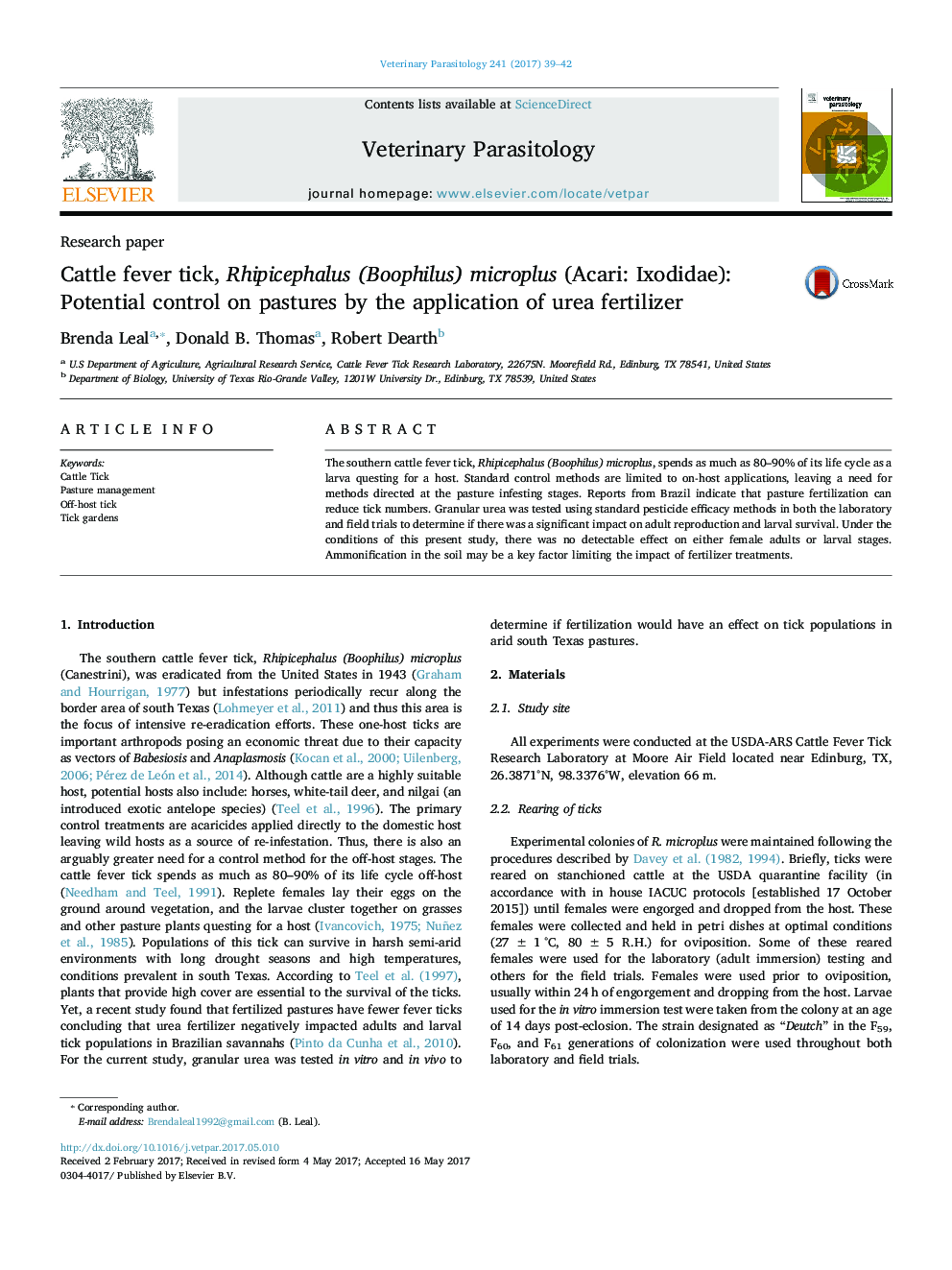| Article ID | Journal | Published Year | Pages | File Type |
|---|---|---|---|---|
| 5545703 | Veterinary Parasitology | 2017 | 4 Pages |
Abstract
The southern cattle fever tick, Rhipicephalus (Boophilus) microplus, spends as much as 80-90% of its life cycle as a larva questing for a host. Standard control methods are limited to on-host applications, leaving a need for methods directed at the pasture infesting stages. Reports from Brazil indicate that pasture fertilization can reduce tick numbers. Granular urea was tested using standard pesticide efficacy methods in both the laboratory and field trials to determine if there was a significant impact on adult reproduction and larval survival. Under the conditions of this present study, there was no detectable effect on either female adults or larval stages. Ammonification in the soil may be a key factor limiting the impact of fertilizer treatments.
Keywords
Related Topics
Life Sciences
Agricultural and Biological Sciences
Animal Science and Zoology
Authors
Brenda Leal, Donald B. Thomas, Robert Dearth,
